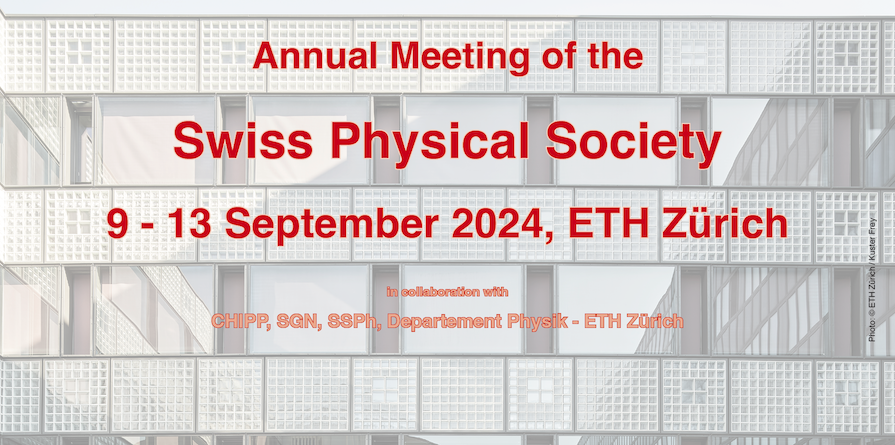Presentation materials
Imaging leverages significantly on the unique properties of synchrotron radiation, in particular with the recent introduction of 4th generation facilities. In this lecture, I will showcase some of the latest results, including ptychographic nanoimaging and time-resolved tomographic microscopy and discuss related challenges. I will further elaborate on how some of the tools originally designed...
Radioactive compounds are important role in the diagnosis and treatment of cancer. Accelerator facilities are used to produce diagnostic radionuclides (β+ and γ-emitters). Most therapeutic nuclides are produced via neutron irradiation. The production route via nuclear spallation reaction after bombardment with high-energy protons is an innovative way of producing medically interesting...
Proton therapy is already becoming a mature approach to treating cancers using radiation, whereby their physical characteristics (the Bragg peak) allow for much improved sculpting of the delivered radiation dose to the tumour than conventional radiotherapy using high energy photons. Nevertheless, many technical improvements can still be made, many of which are being pursued at CPT. Main...
In biological experiments for radiotherapy, irradiation at ultra-high dose rates demonstrated a protective effect on the healthy tissue. The so-called FLASH effect, originally explored with electrons, is now being studied with other beams such as protons.
The presentation will discuss the experience of upgrading a proton beamline for FLASH experiments at the Center for Proton Therapy. It...
Validation of the range of protons delivered during proton therapy is important to ensure that there is no overdosage of healthy tissue or underdosage of the tumour. Positron emission tomography can image isotopes, e.g. O15 and C11, produced by nuclear interactions of the protons within the patient, giving a surrogate for delivered dose. The PETITION PET detector has been developed for in-vivo...
A positron emission tomography (PET) scanner has been developed within the PETITION collaboration, for online adaptation and verification purposes in proton therapy. It can be used for biological adaptation of the treatment plan by imaging hypoxia daily on-the-table. Hypoxic cells within the tumours are radio-resistant and not accounting for it can result in a suboptimal treatment. A...
At the frontier between research and innovation, POSiCS is a project aiming to build a scalable and handable gamma-camera for Radio-Guided Surgeries. Targeting the imaging of lymph nodes for biopsies in the context of breast cancer and cutaneous melanoma, the camera aims at reducing the invasiveness of the surgical procedure while improving the surgery success probability. The camera is based...
Mueller polarimetry is a strong experimental tool for characterizing the optical properties of samples. Nowadays, polarimetry-based devices represent one of the most promising directions for recognizing various types of a cancer during surgical procedures for example. While polarimetric reflection surface imaging is popular, we focus on the back-scattering setup, where the light penetrates...
Tokamak disruptions pose significant challenges in fusion research. Although it has been widely accepted that natural disruptions are caused by the growth of tearing or neoclassical tearing modes[1], studies have shown that the finite resistivity of the wall can have a significant effect on the thermal loss of the plasma[2]. This study investigates the chain of events leading to disruptions,...
The avalanche of high-energy runaway electrons (RE) during ITER disruptions could potentially generate several MA’s of RE current which might damage the plasma-facing components. Previous studies have suggested that avoiding the formation of such a large RE current would be difficult. However, before their quantity increases to a large value, some REs might be lost due to the scraping-off of...
Considering conditions relevant to magnetic fusion plasmas, a code is being developed for solving in a kinetic framework the steady state solution of the plasma-wall boundary layer, comprising both the collisionless magnetic presheath and the Debye sheath.
For a given electrostatic potential profile, discretized on a finite element basis, the ion density in each element is calculated by...
Electron-cyclotron waves are widely used for plasma heating and current drive in tokamaks. The possibility of very localised deposition renders them appealing for instability mitigation and tailored control. However, previous work
Ultrafast lasers are outstanding tools for glass processing. When focused inside a transparent substrate, a train of femtosecond pulses can be absorbed via non-linear interactions resulting in a permanent modification of the sample. In this work, we show how an extremely focused femtosecond laser beam followed by wet chemical etching can be used to create sub-micrometric channels in fused...
Land mines and unexploded ordnance (UXO) are a wide-spread humanitarian problem in former war zones. Different techniques are used for the detection, but a main problem is the high false positive rate. For the detection of UXO we developed portable electromagnetic induction spectrometer, which is able to distinguish the size of metal objects in the ground. At low frequencies of less than 1...
The “FLASH” effect is currently a topic of considerable interest in radio-oncology. We present the design of a novel VHEE linac, to be built and installed at CHUV (Lausanne), capable of producing electron beams which deliver radiation at dose rates and time scales consistent with the FLASH effect. The design is based on X-band radio-frequency technology, developed at CERN for the CLIC study....
